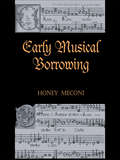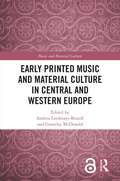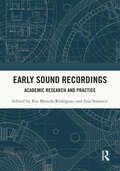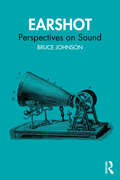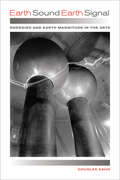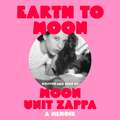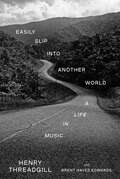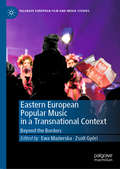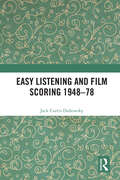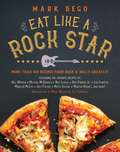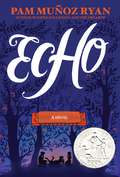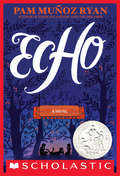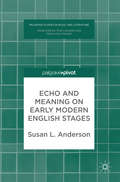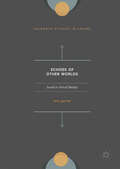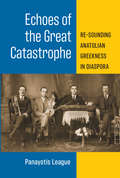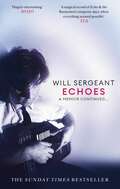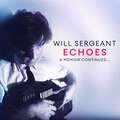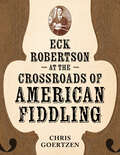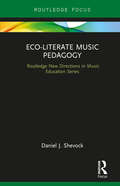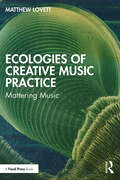- Table View
- List View
Early Musical Borrowing (Criticism and Analysis of Early Music)
by Honey MeconiFirst Published in 2004. Routledge is an imprint of Taylor & Francis, an informa company.
Early Printed Music and Material Culture in Central and Western Europe (Music and Material Culture)
by Andrea Lindmayr-Brandl Grantley McDonaldThis book presents a varied and nuanced analysis of the dynamics of the printing, publication, and trade of music in the sixteenth and early seventeenth centuries across Western and Northern Europe. Chapters consider dimensions of music printing in Britain, the Holy Roman Empire, the Netherlands, France, Spain and Italy, showing how this area of inquiry can engage a wide range of cultural, historical and theoretical issues. From the economic consequences of the international book trade to the history of women music printers, the contributors explore the nuances of the interrelation between the materiality of print music and cultural, aesthetic, religious, legal, gender and economic history. Engaging with the theoretical turns in the humanities towards material culture, mobility studies and digital research, this book offers a wealth of new insights that will be relevant to researchers of early modern music and early print culture alike.
Early Sound Recordings: Academic Research and Practice
by Eva Moreda Rodríguez Inja StanovićThe use of historical recordings as primary sources is relatively well established in both musicology and performance studies and has demonstrated how early recording technologies transformed the ways in which musicians and audiences engaged with music. This edited volume offers a timely snapshot of a wide range of contemporary research in the area of performance practice and performance histories, inviting readers to consider the wide range of research methods that are used in this ever-expanding area of scholarship. The volume brings together a diverse team of researchers who all use early recordings as their primary source to research performance in its broadest sense in a wide range of repertoires within and on the margins of the classical canon – from the analysis of specific performing practices and parameters in certain repertoires, to broader contextual issues that call attention to the relationship between recorded performance and topics such as analysis, notation and composition. Including a range of accessible music examples, which allow readers to experience the music under discussion, this book is designed to engage with academic and non-academic readers alike, being an ideal research aid for students, scholars and performers, as well as an interesting read for early sound recording enthusiasts.
Earshot: Perspectives on Sound
by Bruce JohnsonEarshot: Perspectives on Sound awakens an understanding of the decisive role that sound has played in history and culture. Although beginning with reference to antiquity, the primary focus is the changing status of sound and hearing in Western culture over the last six hundred years, covering the transition from the medieval period to the contemporary world. Since mythic times, sound has been an essential element in the formation of belief systems, personal and community identities and the negotiations between them. The varied case studies included in the book cover major reference points in the changing politics of sound, particularly in relation to the status of the other major conduit of social transactions, vision. Earshot is not a work of cultural theory but is anchored in social practices and material culture and is therefore a valuable resource for conveying sound to both undergraduate students as well as the general reader.
Earth Sound Earth Signal: Energies and Earth Magnitude in the Arts
by Douglas KahnEarth Sound Earth Signal is a study of energies in aesthetics and the arts, from the birth of modern communications in the nineteenth century to the global transmissions of the present day. Grounded in the Aeolian sphere music that Henry David Thoreau heard blowing in telegraph lines and in the Aelectrosonic sounds of natural radio that Thomas Watson heard in telephone lines, the book moves through the histories of science, media, music, and the arts to the 1960s, when the composer Alvin Lucier worked with the "natural electromagnetic sounds" present from "brainwaves to outer space," through the urban electromagnetism in the conceptual art of Robert Barry, to the energy scavenging drawings and antennas by the artist Joyce Hinterding. From the sounds of auroras at high latitudes and atmospheric electricity in the mountains, to underground music of earthquakes and nuclear explosions, to music bounced off the moon and the sounds of the sun, Earth Sound Earth Signal rethinks energy at a global scale through detailed discussions of artists and scientists such as Gordon Mumma, Pauline Oliveros, John Cage, James Turrell, Karl-Birger Blomdahl, Paul DeMarinis, Semiconductor, Thomas Ashcraft, Katie Paterson, Edmond Dewan, Ludwik Liszka and many others.
Earth to Moon
by Moon Unit ZappaThe saying goes that "God only gives you what you can handle." Well God didn't grow up in my atheist, Wiccan, fame-laden, oversexed, teetotalling, drug-free, cloistered, chaotic, non-communicative, workaholic, feral-feeling house.'For Moon Unit, daughter of musician Frank Zappa and his 'manager', Gail, processing a life so unique, so punctuated by the whims of creative urges, the tastes of popular culture and the calculus of celebrity, has at times been eviscerating. But it is her deep sense of humour and unshakeable humility that keeps her - and this memoir - pinned to the ground.A child-star at age 14 after her accidental international hit single (recorded with her father), 'Valley Girl', turned her into a reluctant celebrity, Moon Unit Zappa's life has been utterly extraordinary from her birth in 1967 into a family that was already blessed/cursed as music royalty thanks to the acknowledged genius of Frank. But what are the consequences of growing up in a family who spend most of their time naked arguing about sexual/extra-marital liaisons and practising white magic in a free-for-all state of nonconformist, virtuoso abandon?Earth to Moon is a reckoning with self-esteem, the ghosts of the past and a mother and a father who, in the process of leaving their mark upon on the world, scarred their first daughter on home soil. Brutally self-deprecating and funny as hell, it belies a rose-tinted perspective on the 70s and 80s west coast American scene, from within the belly of the beast of the rock and roll world.
Earth to Moon
by Moon Unit ZappaThe saying goes that "God only gives you what you can handle." Well God didn't grow up in my atheist, Wiccan, fame-laden, oversexed, teetotalling, drug-free, cloistered, chaotic, non-communicative, workaholic, feral-feeling house.'For Moon Unit, daughter of musician Frank Zappa and his 'manager', Gail, processing a life so unique, so punctuated by the whims of creative urges, the tastes of popular culture and the calculus of celebrity, has at times been eviscerating. But it is her deep sense of humour and unshakeable humility that keeps her - and this memoir - pinned to the ground.A child-star at age 14 after her accidental international hit single (recorded with her father), 'Valley Girl', turned her into a reluctant celebrity, Moon Unit Zappa's life has been utterly extraordinary from her birth in 1967 into a family that was already blessed/cursed as music royalty thanks to the acknowledged genius of Frank. But what are the consequences of growing up in a family who spend most of their time naked arguing about sexual/extra-marital liaisons and practising white magic in a free-for-all state of nonconformist, virtuoso abandon?Earth to Moon is a reckoning with self-esteem, the ghosts of the past and a mother and a father who, in the process of leaving their mark upon on the world, scarred their first daughter on home soil. Brutally self-deprecating and funny as hell, it belies a rose-tinted perspective on the 70s and 80s west coast American scene, from within the belly of the beast of the rock and roll world.
Earth to Moon: A Memoir
by Moon Unit ZappaFrom Moon Unit Zappa, the daughter of musical visionary Frank Zappa, comes a memoir of growing up in her unconventional household in 1970s Los Angeles, coming of age in the Hollywood Hills in the 1980s as the “Valley Girl,” gaining momentum as an accidental VJ on a new network called MTV, and finding herself after losing her father, then her mother, and the testing of her most important relationships.How can you navigate life as the “normal” child of an extraordinary creative? What is it like to live in a hothouse of individuality that on one hand fosters freedom of expression, and on the other tamps down the basic desires of a child for boundaries and affection? Should you call your parents Frank and Gail from birth? For Moon Unit Zappa, processing a life so punctuated by the whims of genius, the tastes of popular culture, the calculus of celebrity, and the nature of love, was at times eviscerating, at times illuminating—but mostly deeply confusing. Yes, this is a book about growing up in the shadow of Frank Zappa. Moon and her family were a source of constant curiosity, for their unique names and for their father’s reputation as a musical savant and fierce protector of the First Amendment, even though he was never a commercial success. Searching for her own path, first as her father’s inadvertent musical collaborator and public sidekick with their surprise mega radio hit, then as an actress, an artist, a spiritual person, a wife and mother, Moon Unit calculates ever-changing equations of fame, family, death and ultimately legacy when dealt the shocking news that Gail’s will established an unequal distribution among the remaining, tight-knit Zappas, catalyzing a quest for meaning and redemption. With love, humor, and humility, Earth to Moon reminds us that every family is faced with problems that are unique to their particular makeup, but the journey to growing into yourself with grace is as universal as it gets.
Earworm and Event: Music, Daydreams, and Other Imaginary Refrains (Thought in the Act)
by Eldritch PriestIn Earworm and Event Eldritch Priest questions the nature of the imagination in contemporary culture through the phenomenon of the earworm: those reveries that hijack our attention, the shivers that run down our spines, and the songs that stick in our heads. Through a series of meditations on music, animal mentality, abstraction, and metaphor, Priest uses the earworm and the states of daydreaming, mind-wandering, and delusion it can produce to outline how music is something that is felt as thought rather than listened to. Priest presents Earworm and Event as a tête-bêche—two books bound together with each end meeting in the middle. Where Earworm theorizes the entanglement of thought and feeling, Event performs it. Throughout, Priest conceptualizes the earworm as an event that offers insight into not only the way human brains process musical experiences, but how abstractions and the imagination play key roles in the composition and expression of our contemporary social environments and more-than-human milieus. Unconventional and ambitious, Earworm and Event offers new ways to interrogate the convergence of thought, sound, and affect.
Easily Slip into Another World: A Life in Music
by Henry Threadgill Brent Hayes EdwardsAn autobiography of one of the towering figures of contemporary American music and a powerful meditation on history, race, capitalism, and art.Henry Threadgill has had a singular life in music. At 79, the saxophonist, flautist, and celebrated composer is one of three jazz artists (along with Ornette Coleman and Wynton Marsalis) to have won a Pulitzer Prize. In Easily Slip into Another World, Threadgill recalls his childhood and upbringing in Chicago, his family life and education, and his brilliant career in music.Here are riveting recollections of the music scene in Chicago in the early 1960s, when Threadgill developed his craft among friends and schoolmates who would go on to form the core of the highly influential Association for the Advancement of Creative Musicians (AACM); the year and a half he spent touring with an evangelical preacher in the mid-1960s; his military service in Vietnam—a riveting tale in itself, but also representative of an under-recognized aspect of jazz history, given the number of musicians in Threadgill&’s generation who served in the armed forces.We appreciate his genius as he travels to the Netherlands, Venezuela, Trinidad, Sicily, and Goa enriching his art; immerses himself in the volatile downtown scene in New York City in the 1970s and 1980s; collaborates with choreographers, writers, and theater directors as well as an astonishing range of musicians, from AACM stalwarts (Muhal Richard Abrams, Roscoe Mitchell, Wadada Leo Smith, and Leroy Jenkins), to Chicago bluesmen, downtown luminaries, and world music innovators; shares his impressions of the recording industry his perspectives on music education and the history of Black music in the United States; and, of course, accounts for his work with the various ensembles he has directed over the past five decades.
Eastern European Music Industries and Policies after the Fall of Communism: From State Control to Free Market (Routledge Russian and East European Music and Culture)
by Patryk GaluszkaEastern Europe during the last thirty years has been a place of radical political, economic, and social transformation, and these changes have affected the cultural industries of various countries. Thirteen chapters by a selection of leading international researchers document the stories of various organisations that once dominated the ‘communist music industries’, such as state-owned record companies, music festivals, and collecting societies. The strategies employed by artists and industries to join international music markets after the fall of communism are explained and evaluated. Political and economic transformations coincided with the advent of digitalisation and the Internet, which intensified the changes. All these issues posed challenges both to record labels and artists who, after adjusting to the rules of the free-market economy, were faced with the falling sales of records caused by the advent of new communication technologies. This book examines how these processes have affected the music industries, scenes, and markets in various Eastern European countries
Eastern European Popular Music in a Transnational Context: Beyond the Borders (Palgrave European Film and Media Studies)
by Ewa Mazierska Zsolt GyőriThis volume examines the transnational character of popular music since the Cold War era to the present. Bringing together the cross-disciplinary research of native scholars, Eastern European Popular Music in a Transnational Context expands our understanding of the movement of physical music, musicians and genres through the Iron Curtain and within the region of Eastern Europe. With case studies ranging from Goran Bregović, Czesław Niemen, the reception of Leonard Cohen in Poland, the Estonian punk scene to the Intervision Song Contest, the book discusses how the production and reception of popular music in the region has always been heavily influenced by international trends and how varied strategies allowed performers and fans to acquire cosmopolitan identities. Cross-disciplinary in nature, the investigations are informed by political, social and cultural history, reception studies, sociology and marketing and are largely based on archival research and interviews.
Easy Folk Songs for the Guitar with Downloadable MP3s
by Hank AberleThis original collection presents more than 20 popular folk songs that have been specially arranged for beginning guitarists. The timeless melodies are supplemented with a helpful tutorial on guitar basics that offers tips on identifying the strings, tuning, and basic chord patterns and strums.These arrangements of Skip to My Lou, He's Got the Whole World in His Hands, Oh! Susanna, Down in the Valley, Barbara Allen, and other tunes include advice for following the time signatures, strumming patterns, and other suggestions. Best of all, each song features a free MP3 download for students to listen to and play along with. The recordings will familiarize beginning guitarists with the pieces' melodies and tempos, and provide practical guidance for playing these beloved folk songs.
Easy Listening and Film Scoring 1948-78
by Jack Curtis DubowskyComposers, arrangers, conductors, session musicians, and executives worked in easy listening and scoring, complicating an academic focus that lionizes film music while ignoring or deriding easy listening. This book documents easy listening’s connections with film music, an aspect overlooked in academic and popular literature.Fueled by the rise of the LP and home entertainment, easy listening became the largest midcentury commercial music market, generating more actual income for the record business than 7- inch singles. Easy listening roped in subgenres including classical, baroque, jazz, Latin, Polynesian, "exotica," rock, Broadway, and R&B, appropriated and reinterpreted just as they were for cinema. Easy listening provided opportunities in orchestral music for conservatory- trained composers. Major film composers such as Henry Mancini and Michel Legrand had a prodigious output of easy listening albums.Critics fault easy listening for structural racisms, overlooking its evolution and practitioners. Easy listening helped destabilize a tripartite record business that categorized product as race records, old time records, or general popular music. Charlie Parker’s with Strings records altered the direction of jazz, profoundly influencing other performers, encouraging bold crosspollinations, and making money.The influence of technology and historical contexts of music for work and leisure are explored. Original interviews and primary sources will fascinate scholars, historians, and students of cinema, television, film scoring, and midcentury popular music.
Eat Like a Rock Star: More Than 100 Recipes from Rock 'n' Roll's Greatest
by Mark Bego Mary WilsonWho knew that Bill Wyman (The Rolling Stones) makes an amazing Lamb Chops with Endive and Blue Cheese Salad, that Michael McDonald (The Doobie Brothers) loves Pasta with Ham and Parmesan Cheese, or that Boz Scaggs eats Tuscan Grilled Chicken?With more than a hundred recipes from seven decades of rock ‘n’ roll, pop, country, RnB, and disco, Mark Bego, along with Mary Wilson of The Supremes, gathers beloved recipes from legendary rocker friends and invites the ultimate music fan to put on an apron and join them at the table. Featuring each rock star’s biography, their favorite recipe, and other fun facts, Eat Like a Rock Star is a must-have for every die-hard rocker-at-heart who loves to eat.There is nowhere else you will find Ray Parker Jr.’s Salmon and Eggs, Joey Fatone’s (NSYNC) Rice Balls, Micky Dolenz’s (The Monkees) Micky ‘D’ Cocktail, and Angela Bowie’s (David Bowie’s ex-wife’s) Rosti Hash Brown Potatoes all in one book. Whether it’s brunch, lunch, dinner, or desert, learn to cook:•Michelle Phillips’s (The Mamas & The Papas) Organic Lemon Chicken•Lou Christie’s Linguine with Fresh Tomatoes•Marilyn McCoo's (The 5th Dimension) Leg of Lamb•Glen Campbell’s Favorite Mexican Chicken Casserole•Sarah Dash’s (Patti LaBelle and the Bluebelles) Peach Cobbler, and more!With a section on head-spinning cocktails, full menu suggestions, as well as author Mark Bego’s own culinary concoctions such as Spicy Szechuan Sesame Noodles and Boozy Banana Cream Pie, look no further for the all-in-one cooking and rock ‘n’ roll companion. As Martha Reeves says about her Smoked Turkey Necks & Lima Beans, “Honey, this is real soul food!”
Echo
by Pam Muñoz RyanMusic, magic, and a real-life miracle meld in this genre-defying masterpiece from storytelling maestro Pam Muñoz Ryan. Lost and alone in a forbidden forest, Otto meets three mysterious sisters and suddenly finds himself entwined in a puzzling quest involving a prophecy, a promise, and a harmonica. Decades later, Friedrich in Germany, Mike in Pennsylvania, and Ivy in California each, in turn, become interwoven when the very same harmonica lands in their lives. All the children face daunting challenges: rescuing a father, protecting a brother, holding a family together. And ultimately, pulled by the invisible thread of destiny, their suspenseful solo stories converge in an orchestral crescendo. Richly imagined and masterfully crafted, ECHO pushes the boundaries of genre and form, and shows us what is possible in how we tell stories. The result is an impassioned, uplifting, and virtuosic tour de force that will resound in your heart long after the last note has been struck.<P><P> Winner of Newbery Honor
Echo
by Pam Muñoz Ryan2016 Newbery Honor BookNew York Times BestsellerAn impassioned, uplifting, and virtuosic tour de force from a treasured storyteller!Lost and alone in a forbidden forest, Otto meets three mysterious sisters and suddenly finds himself entwined in a puzzling quest involving a prophecy, a promise, and a harmonica. Decades later, Friedrich in Germany, Mike in Pennsylvania, and Ivy in California each, in turn, become interwoven when the very same harmonica lands in their lives. All the children face daunting challenges: rescuing a father, protecting a brother, holding a family together. And ultimately, pulled by the invisible thread of destiny, their suspenseful solo stories converge in an orchestral crescendo. Richly imagined and masterfully crafted, Echo pushes the boundaries of genre, form, and storytelling innovation to create a wholly original novel that will resound in your heart long after the last note has been struck.
Echo and Meaning on Early Modern English Stages
by Susan L. AndersonThis book examines the trope of echo in early modern literature and drama, exploring the musical, sonic, and verbal effects generated by forms of repetition on stage and in print. Focusing on examples where Echo herself appears as a character, this study shows how echoic techniques permeated literary, dramatic, and musical performance in the period, and puts forward echo as a model for engaging with sounds and texts from the past. Starting with sixteenth century translations of myths of Echo from Ovid and Longus, the book moves through the uses of echo in Elizabethan progress entertainments, commercial and court drama, Jacobean court masques, and prose romance. It places the work of well-known dramatists, such as Ben Jonson and John Webster, in the context of broader cultures of performance. The book will be of interest to scholars and students of early modern drama, music, and dance.
Echoes of Other Worlds: Sound in Virtual Reality
by Tom A. GarnerThis book explores the nature and importance of sound in virtual reality (VR). Approaching the subject from a holistic perspective, the book delivers an emergent framework of VR sound. This framework brings together numerous elements that collectively determine the nature of sound in VR; from various aspects of VR technology, to the physiological and psychological complexities of the user, to the wider technological, historical and sociocultural issues. Garner asks, amongst other things: what is the meaning of sound? How have fictional visions of VR shaped our expectations for present technology? How can VR sound hope to evoke the desired responses for such an infinitely heterogeneous user base? This book if for those with an interest in sound and VR, who wish to learn more about the great complexities of the subject and discover the contemporary issues from which future VR will surely advance.
Echoes of the Great Catastrophe: Re-Sounding Anatolian Greekness in Diaspora (Musics in Motion)
by Panayotis LeagueEchoes of the Great Catastrophe: Re-sounding Anatolian Greekness in Diaspora explores the legacy of the Great Catastrophe—the death and expulsion from Turkey of 1.5 million Greek Christians following the Greco-Turkish War of 1919–1922—through the music and dance practices of Greek refugees and their descendants over the last one hundred years. The book draws extensively on original ethnographic research conducted in Greece (on the island of Lesvos in particular) and in the Greater Boston area, as well as on the author’s lifetime immersion in the North American Greek diaspora. Through analysis of handwritten music manuscripts, homemade audio recordings, and contemporary live performances, the book traces the routes of repertoire and style over generations and back and forth across the Atlantic Ocean, investigating the ways that the particular musical traditions of the Anatolian Greek community have contributed to their understanding of their place in the global Greek diaspora and the wider post-Ottoman world. Alternating between fine-grained musicological analysis and engaging narrative prose, it fills a lacuna in scholarship on the transnational Greek experience.
Echoes: A memoir continued . . .
by Will SergeantTHE FOLLOW UP MEMOIR TO SUNDAY TIMES BESTSELLER, BUNNYMANScenic Wye Valley isn't the typical place for a rock story to begin, but when Echo & the Bunnymen hit the studio to record their ground-breaking debut album, Crocodiles, it was anything but ordinary. The album was the making of the band - cultivating a cult following which would soon evolve into staggering mainstream success. Their lives would never be the same again.In Echoes, legendary guitarist and founding member of Echo & the Bunnymen, Will Sergeant, recounts the band's whirlwind rise to stardom with his trademark wryness and intelligence. Sharing never-before-told anecdotes - including the heady Rockfield Studio sessions and touring across the US, playing sold-out shows at Whisky a Go Go and experiencing the iconic New York club scene from dusk 'til dawn - and accompanied by snapshots of the cultural, social and political scene at the time, this is a memoir to remember.
Echoes: A memoir continued . . .
by Will SergeantTHE FOLLOW UP MEMOIR TO SUNDAY TIMES BESTSELLER, BUNNYMANScenic Wye Valley isn't the typical place for a rock story to begin, but when Echo & the Bunnymen hit the studio to record their ground-breaking debut album, Crocodiles, it was anything but ordinary. The album was the making of the band - cultivating a cult following which would soon evolve into staggering mainstream success. Their lives would never be the same again.In Echoes, legendary guitarist and founding member of Echo & the Bunnymen, Will Sergeant, recounts the band's whirlwind rise to stardom with his trademark wryness and intelligence. Sharing never-before-told anecdotes - including the heady Rockfield Studio sessions and touring across the US, playing sold-out shows at Whisky a Go Go and experiencing the iconic New York club scene from dusk 'til dawn - and accompanied by snapshots of the cultural, social and political scene at the time, this is a memoir to remember.The music at the beginning and end of this audiobook is taken from Dragonflies, an original piece written and performed by Will Sergeant
Eck Robertson at the Crossroads of American Fiddling (American Made Music Series)
by Chris GoertzenThe Texas Panhandle’s frontier days were fresh in memory when fiddler Eck Robertson (1887-1975) arrived. Cowboys still worked on ranches in the 1910s but barbed-wire fences abounded too. Robertson pursued a continually evolving strategy to profit from the feverish transformation of living history into marketable nostalgia. He adopted cowboy dress clothes for his first recording session in New York in 1922 and became known as a “Famous Cowboy Fiddler.” His stubborn vision spawned traditional-yet-transformed Texas fiddling.Robertson criticized other fiddlers because their playing was “just the same thing over and over.” Robertson insisted that his fiddling—his balance of cleaving to tradition while adding new content—was the way of the future. Author Chris Goertzen traces Robertson’s story through detailed biography, music transcriptions, and careful musical analysis. Though Robertson struggled to attain consistent financial success as a performer, he cultivated a varied repertoire that allowed him to balance offering the comfort of shared recollection with fresh excitement. His biggest hit, “Sally Goodin,” was a game changer, both as played live and as the very first country music recording. With his undeniable talent and forward thinking, Robertson took a musical practice that already had a broad reach and a distinguished history in a direction that would guarantee a niche in modern American culture.
Eco-Literate Music Pedagogy: A Philosophy/autoethnography Of Music Education On Soil (Routledge New Directions in Music Education Series)
by Daniel J. ShevockEco-Literate Music Pedagogy examines the capacity of musiciking to cultivate ecological literacy, approaching eco-literate music pedagogy through philosophical and autoethnographical lenses. Building on the principle that music contributes uniquely to human ecological thinking, this volume tracks the course of eco-literate music pedagogy while guiding the discussion forward: What does it mean to embrace the impulse to teach music for ecological literacy? What is it like to theorize eco-literate music pedagogy? What is learned through enacting this pedagogy? How do the impulsion, the theorizing, and the enacting relate to one another? Music education for ecological consciousness is experienced in local places, and this study explores the theory underlying eco-literate music pedagogy in juxtaposition with the author’s personal experiences. The work arrives at a new philosophy for music education: a spiritual praxis rooted in soil communities, one informed by ecology’s intrinsic value for non-human being and musicking. Eco-Literate Music Pedagogy adds to the emerging body of music education literature considering ecological and environmental issues.
Ecologies of Creative Music Practice: Mattering Music
by Matthew LovettEcologies of Creative Music Practice: Mattering Music explores music as a dynamic practice embedded in contemporary ecological contexts, one that both responds to, and creates change within, the ecologies in which it is created and consumed. This highly interdisciplinary analysis includes theoretical and practical considerations – from blockchain technology and digital platform commerce to artificial intelligence and the future of work, to sustainability and political ecology – as well as contemporary philosophical paradigms, guiding its investigation through three main lenses: How can music work as a conceptual tool to interrogate and respond to our changing global environment? How have transformations in our digital environment affected how we produce, distribute and consume music? How does music relate to matters of political ecology and environmental change? Within this framework, music is positioned as a starting point from which to examine a range of contexts and environments, offering new perspectives on contemporary technological and ecological discourse. Ecologies of Creative Music Practice: Mattering Music is a valuable text for advanced undergraduates, postgraduates, researchers and practitioners concerned with producing, performing, sharing and listening to music.
